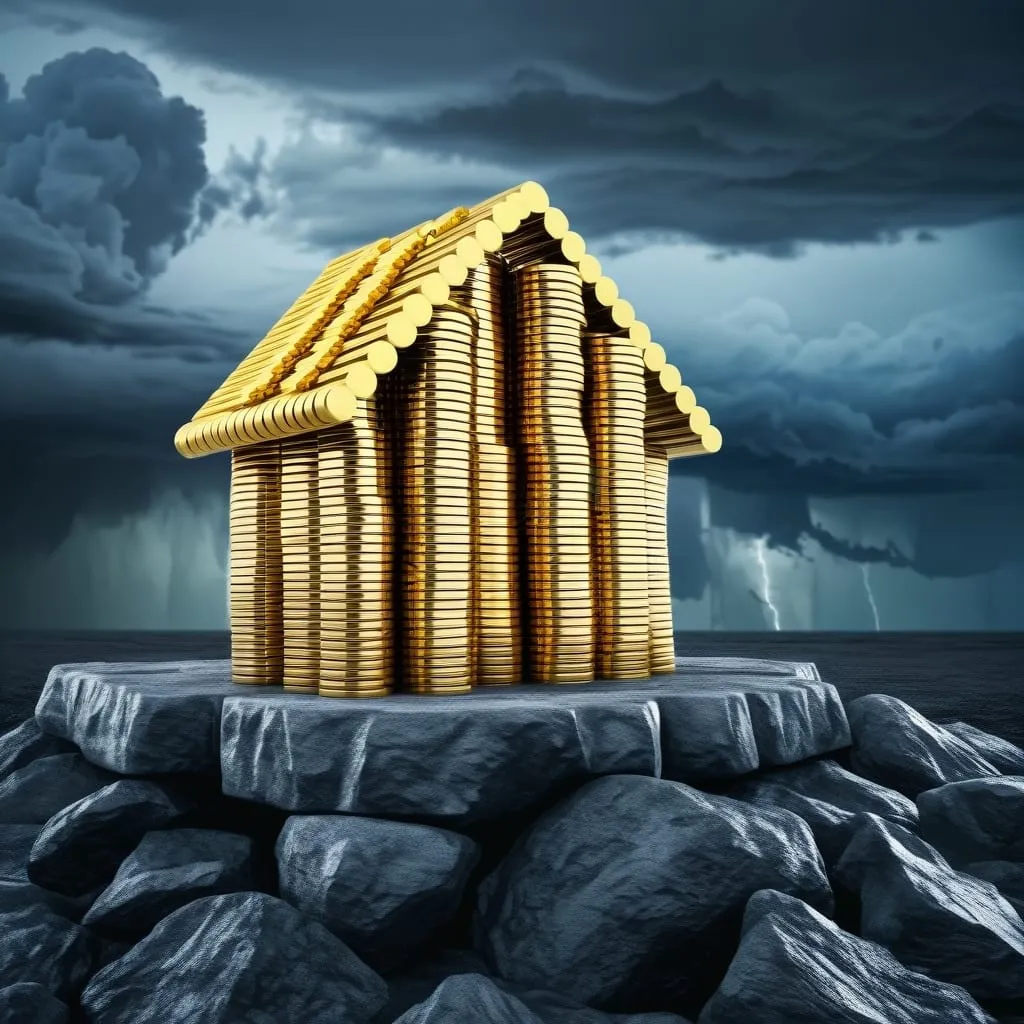The CASHFLOW Quadrant, developed by Robert Kiyosaki, is a framework that categorizes the different ways people generate income into four distinct quadrants: Employee (E), Self-employed (S), Business owner (B), and Investor (I). Each quadrant represents a unique approach to earning money and reflects different mindsets, values, and skill sets. The Employee Quadrant includes those who work for others and earn a salary. The Self-Employed Quadrant consists of individuals who run their own businesses or work independently.
The Business Owner Quadrant is for those who create and control business systems that operate independently of their direct involvement. Lastly, the Investor Quadrant includes people who make money by investing in various assets, allowing their money to work for them. Understanding these quadrants is crucial for anyone looking to achieve financial freedom, as it highlights the diverse pathways to wealth and the core differences driving financial behaviors and decisions.
The Employee (E) Quadrant
The CASHFLOW Quadrant concept divides income generation into four distinct categories: Employee (E), Self-employed (S), Business owner (B), and Investor (I). The Employee Quadrant represents individuals who earn income through traditional employment. These individuals trade their time and skills for a salary or hourly wage. Employees typically value security, stability, and benefits such as health insurance and retirement plans. The mindset of employees often revolves around seeking a safe and predictable source of income, driven by the fear of economic uncertainty and job loss.
Employees tend to use phrases like "I need a secure job" and "I want good benefits." These statements reflect their desire for certainty and aversion to risk. The emotional drivers for employees are deeply rooted in the need for financial stability and the assurance of regular paychecks. This quadrant is characterized by a reliance on an external entity (employer) for financial well-being, which can limit opportunities for significant wealth accumulation compared to other quadrants.
Understanding the Employee Quadrant is crucial as it highlights the foundational mindset and values that drive many individuals' financial decisions. Recognizing these traits helps explain why some people are more comfortable and content remaining in the E quadrant, while others may seek opportunities in different quadrants for greater financial freedom.
The Self-Employed (S) Quadrant
The Self-Employed (S) Quadrant encompasses individuals who operate their own businesses or work as independent professionals. These people value independence and control over their work, preferring to be their own boss rather than working under someone else's supervision. Self-employed individuals are often highly skilled and take pride in their expertise, striving for excellence in their field.
Key traits of the self-employed include a strong sense of responsibility and a direct correlation between their effort and income. They often say things like "I charge $100 per hour" or "I prefer to handle things myself to ensure they are done right." These statements reflect their belief in personal accountability and perfectionism. Unlike employees, self-employed individuals don't rely on a fixed salary; their income is directly tied to the success of their ventures.
However, the S quadrant also comes with challenges. Self-employed individuals may find it difficult to delegate tasks, believing no one else can perform them as well as they can. This can lead to long hours and limited scalability, as their business heavily depends on their personal involvement. Additionally, the financial risk is higher, as income can fluctuate based on market conditions and client demands.
Understanding the Self-Employed Quadrant highlights the trade-offs between autonomy and financial stability. It underscores the importance of balancing personal involvement with strategic delegation to achieve sustainable growth and financial success.
The Business Owner (B) Quadrant
The Business Owner (B) Quadrant is defined by individuals who own systems and leverage the efforts of others to generate income. Unlike those in the Self-Employed (S) Quadrant, business owners focus on building and managing systems that operate independently of their direct involvement. This allows them to scale their businesses and create more significant wealth without the need to work longer hours.
Business owners are characterized by their ability to delegate effectively. They often say, "Why do it yourself when you can hire someone to do it for you?" This mindset allows them to attract and manage teams of skilled professionals from various quadrants (E, S, B, and I) to drive their business forward. Successful business owners, like Henry Ford, are known for their leadership skills and ability to inspire and bring out the best in their teams.
One of the critical distinctions between the B and S quadrants is scalability. A true business owner can leave their business for extended periods and return to find it thriving, thanks to well-established systems and competent teams. This scalability is a significant advantage of the B quadrant, providing both financial growth and personal freedom.
However, transitioning to the B quadrant requires a shift in mindset and skill set. Business owners need to master financial literacy, strategic planning, and team management. They must also embrace a long-term vision, focusing on building sustainable systems rather than immediate profits. Understanding the Business Owner Quadrant emphasizes the importance of creating scalable systems and cultivating leadership skills to achieve lasting financial success and independence.
The Investor (I) Quadrant
The Investor (I) Quadrant is where money truly works for the individual. Investors generate income through smart investments in various assets such as stocks, real estate, and businesses. Unlike the other quadrants, investors focus on accumulating wealth through passive income, which doesn't require their constant active involvement.
Investors often use phrases like, "Is my cash flow based on an internal rate of return or net rate of return?" These statements reflect their deep understanding of financial metrics and investment strategies. The primary advantage of this quadrant is the potential for significant financial growth and independence, as investors can build wealth exponentially through compounding returns.
However, investing carries inherent risks. Successful investors need a solid understanding of market dynamics, risk management, and financial analysis. The Investor Quadrant emphasizes the importance of financial education and the ability to make informed decisions. Mastering these skills enables individuals to achieve financial freedom and create lasting wealth with minimal active effort.
Core Differences in Quadrant Preferences
The choice of quadrant where individuals generate their income is deeply influenced by their psychological and emotional makeup. The Core Differences between individuals in each quadrant often stem from their upbringing, environment, and personal experiences, which shape their financial perspectives and risk tolerance.
For instance, employees (E) typically seek stability and security, influenced by a traditional upbringing that values a steady job with benefits. They prefer predictability and are often risk-averse, finding comfort in a structured environment where responsibilities and rewards are clearly defined. Their primary concern is often job security and financial stability, driven by a fear of economic uncertainty.
In contrast, self-employed individuals (S) value independence and control. Their mindset is shaped by a desire to directly influence their success and income. They are often perfectionists, preferring to rely on their abilities rather than on others. This quadrant attracts those who are comfortable with taking on more personal responsibility and who believe in the mantra, "If you want something done right, do it yourself."
Business owners (B), however, thrive on creating and managing systems. They delegate tasks and build teams, focusing on scalability and leveraging others' skills to achieve their goals. Their upbringing might include experiences that taught them the importance of leadership and collaboration. They are often driven by a vision of long-term success and financial independence.
Investors (I) possess a high tolerance for risk and a strategic mindset. They are driven by the desire to make their money work for them, continuously seeking opportunities for passive income. Their financial decisions are informed by a deep understanding of market dynamics and investment principles, often influenced by experiences that highlighted the benefits of financial literacy and strategic planning.
Transitioning Between Quadrants
Transitioning between quadrants is a significant shift that requires more than just acquiring new skills; it involves a fundamental change in mindset and emotional resilience. Moving from the Employee (E) quadrant to the Self-Employed (S), Business Owner (B), or Investor (I) quadrants often means stepping out of a comfort zone and embracing new challenges and uncertainties.
The primary barriers to transitioning are emotional. For employees used to job security, the uncertainty of self-employment or business ownership can be daunting. Fear of failure, fear of financial loss, and fear of the unknown can hinder progress. Overcoming these fears requires a shift in mindset from seeking security to seeking opportunity and growth.
To successfully transition, individuals should start by gradually building their knowledge and skills relevant to the new quadrant. For example, an employee looking to become an investor should start by educating themselves on investment strategies and principles. Building a small portfolio and gaining hands-on experience can help mitigate fear and build confidence.
Many successful transitions are marked by initial failures and setbacks. However, these experiences are valuable learning opportunities. Embracing a growth mindset, where challenges are seen as opportunities to learn and grow, is crucial. Networking with mentors and like-minded individuals can provide support and guidance through the transition process.
Conclusion: Change for Financial Freedom
Embracing change is a critical component in the journey towards financial freedom. This involves not only a willingness to learn and adapt but also the courage to face uncertainties and take calculated risks.
Summary of Key Points: To achieve financial freedom, individuals must understand the unique characteristics and requirements of each quadrant: the stability and security of the Employee (E) quadrant, the independence and control of the Self-Employed (S) quadrant, the scalability and leadership in the Business Owner (B) quadrant, and the passive income and strategic planning of the Investor (I) quadrant. Recognizing these differences allows for informed decisions about which quadrant to operate in or transition to.
It is essential to recognize personal strengths and weaknesses and how they align with the demands of each quadrant. Self-awareness can guide individuals to the quadrant where they are most likely to succeed. Adapting to new roles and responsibilities requires continuous learning and development. Embracing a growth mindset, where challenges are viewed as opportunities, is crucial for long-term success.
Financial freedom is not solely about accumulating wealth but also about achieving a sense of security and independence. It involves creating multiple streams of income, leveraging resources, and building systems that provide financial stability and growth. The journey to financial freedom is personal and unique for everyone. It requires persistence, resilience, and a proactive approach to managing finances and opportunities. By understanding and embracing the dynamics of different quadrants, individuals can navigate their paths to financial independence more effectively and confidently.






